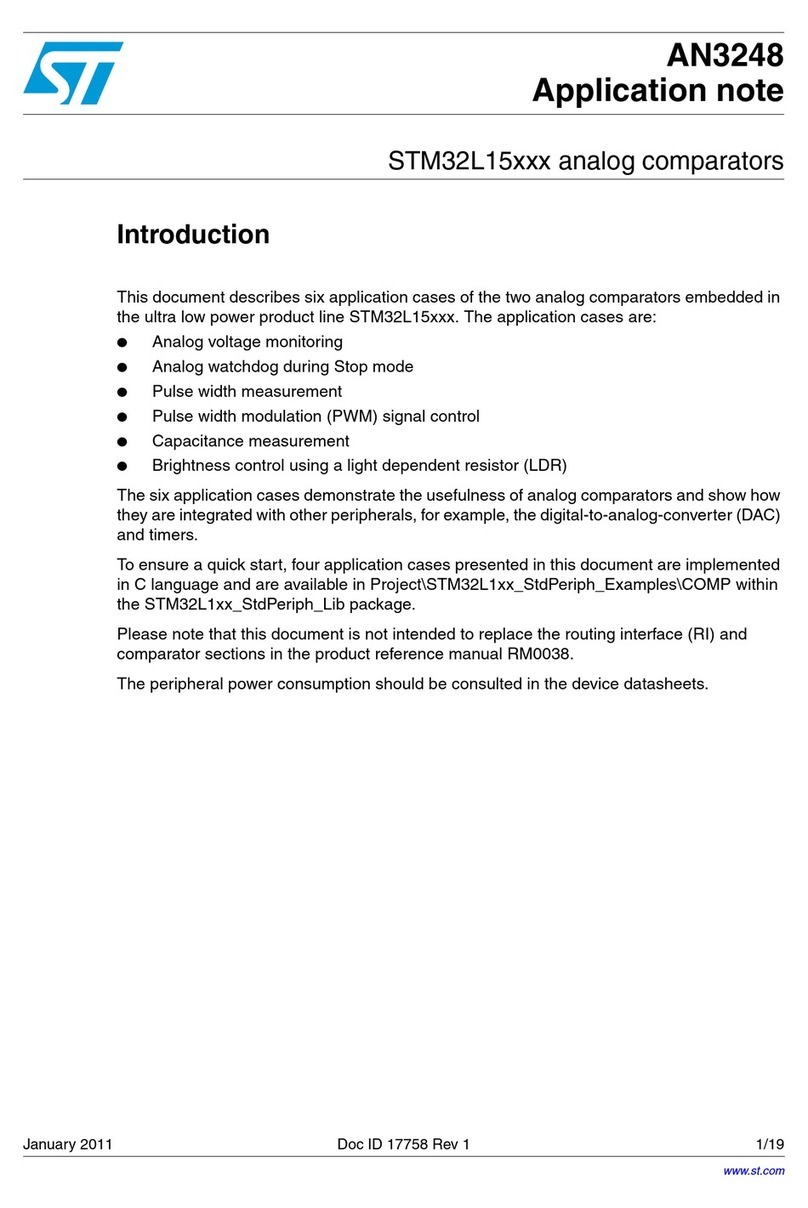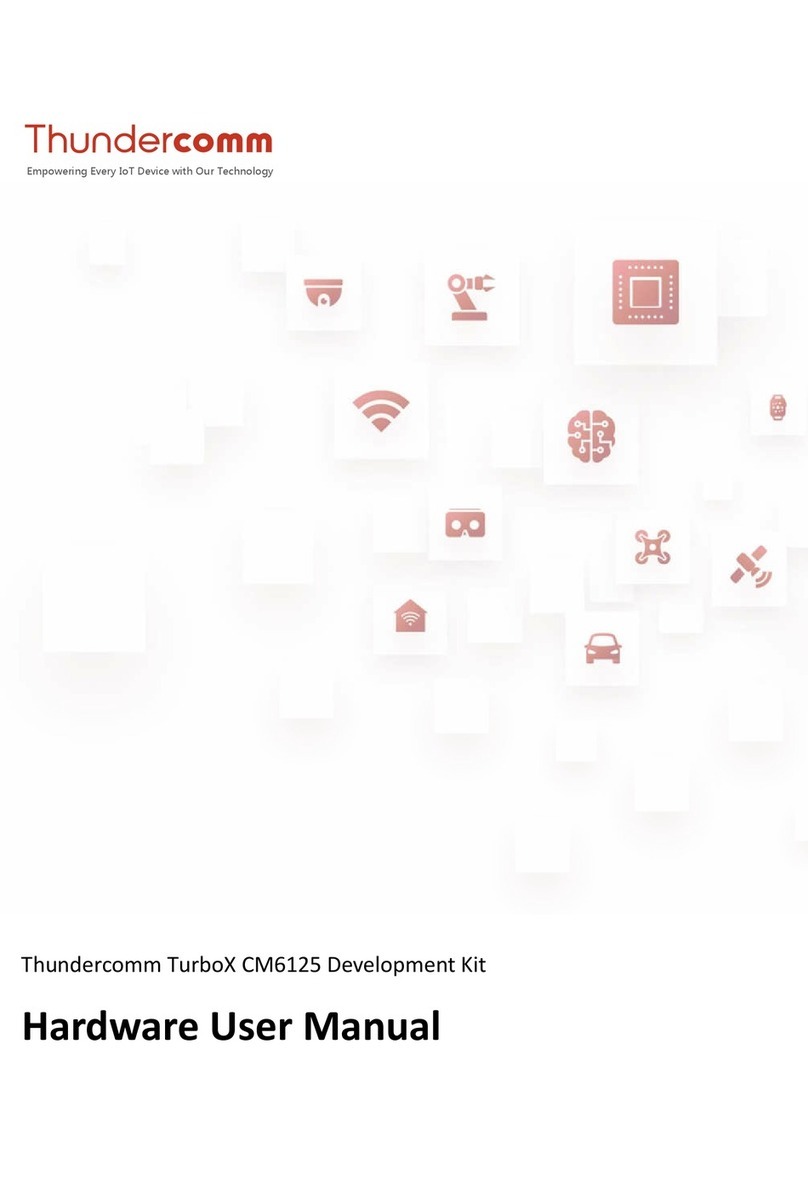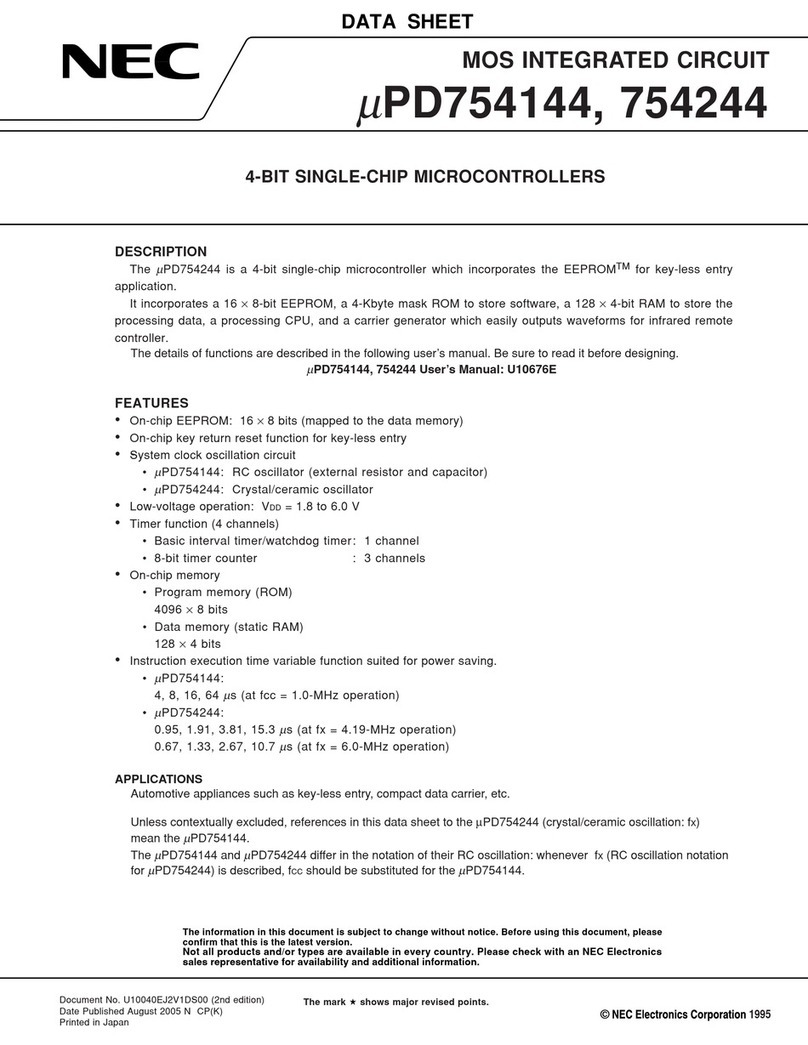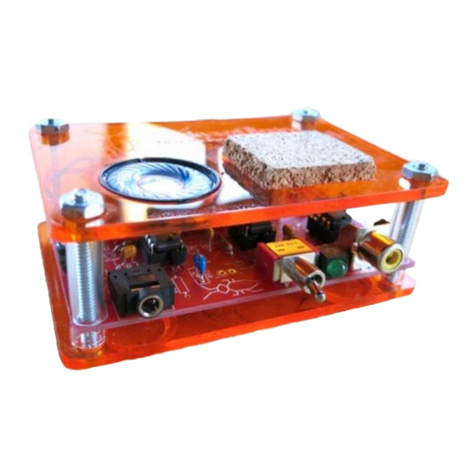Technology Will Save Us DIY Synth User manual

DIY
Synth
Kit -
Manual

Welcome to the
DIY Synth
- Manual
This is a step-by-step guide to making
your own electronic Synth.
All the equipment you’ll need to make
your synth is your DIY Synth kit and of
course your fingers.
We hope you enjoy this creative
task, learn some new technological
skills and apply them to your life in
useful ways.

3DIY Synth - Manual
Getting Started
Top Tips
Keep an eye out for the top
tips. They are highlighted in
a yellow box like this!
Useful Appendix
Further information on all the components in
this kit can be found in the Appendix at the back
of the manual. Learn about their use within the
circuit you are building.
Making Time
The kit takes about a fun filled hour to complete,
depending on how creative you get with the
construction of your Synth box.
Technology Will Save Us
Further Resources
Information on how the circuit works alongside
different ways to extend your Synth can be found
on our resource page: twsu.co/synth

DIY Synth - Manual
4
Making your DIY
Synth
Components
Parts:
1) 1x Breadboard
2) 1x 9v Battery Clip
3) Selection of Jumper Wires (Colour coded and cut to size)
4) 1x 8 Ohm Speaker
5) 1x 1k Ohm Resistor
6) 1x 4.7K Logarithmic Potentiometer (Volume Control)
7) 2x 470K Linear Potentiometer (Frequency and Pitch Control)
8) 1x NE556 Timer IC (Integrated Circuit)
9) 1x 10uf Electrolytic Capacitor (Cylindrical and Black)
10) 2x 10nf Ceramic Capacitor
Check your components to make sure you have all the parts to build
your DIY Synth!

5DIY Synth - Manual
Top Tip
Some components may
look slightly different to
the ones above, don’t be
alarmed, this is normal!
1
4
2
3 5 89 10
6
7
Technology Will Save Us

DIY Synth - Manual
6
1
Step 1
The Breadboard
Take a look at the
breadboard. The horizontal
rows at the top and bottom
of this image (marked in
red and blue) are used as
“power rails”. They provide
a convenient way to supply
components with
electricity. The power rails
are connected all the way
along the edges of the
breadboard.
However the inside rails on
the breadboard run
perpendicular to those
on the outside. These are
marked in orange.

7DIY Synth - Manual
Step 1
Connect the power and
ground rails on each side
of the breadboard together
using two jumper wires,
its a good idea to use red
wire for the positive voltage
supply and black for the
ground. Top red rail
connects to the bottom red
rail and the top black rail to
the bottom black.
Top Tip
For this kit we have colour
coded the wires for you. But
as a general rule, red wires
are positive and black are
negative. Sticking to this will
help you when building your
own creations.
Technology Will Save Us

DIY Synth - Manual
8
2
Step 2
556 Timer IC
(Integrated Circuit)
Find the 556 timer chip. The
chip has 14 pins, starting at
the end of the chip with the
notch in it the left pin is (1)
and finishing on the other
side of the notch at pin (14)
Place the chip over the
gutter of the breadboard
with the notch facing to the
left. Placing the chip near
the centre gives you room
to space out the other
components around the
board.
556
Dual
Timer
discharge A
threshold A
control A
reset A
output A
trigger A
0V trigger B
output B
reset B
control B
threshold
discharge
+4.5 to 15
1234567
14 13 12 11 10 98

9DIY Synth - Manual
Top Tip
Refer back to step 2.0 for the
numbering of the IC Chip
pins.
Step 2
Now connect the chip to the
power rails using the
following wires. Use the
small red wires to connect
Pins 4, 10 and 14 to the
positive red rail.
Use the small black wire to
connect Pin 7 to the blue
ground rail.
Technology Will Save Us

DIY Synth - Manual
10
3
Step 3
The Resistor
Take your 1K resistor.
Now add the 1K resistor
across pins 1 and 6 of the IC
chip.
Top Tip
Resistors can be plugged in
any way around. Their legs
are the same length - which
is a way to tell that it can be
plugged in both ways. Also,
if you look at the body of
the resistor, you’ll see that
there are different coloured
stripes. These stripes tell us
what value the resistor is.
Brown, Black, Red = 1K Ohm.

11DIY Synth - Manual
Connecting the Pins
4
Step 4
Use the 2 yellow jumper
wires to connect the
following IC chip pins
together:
Pin 2 to 6
Pin 5 to 8
Use the small silver wire
to connect the following IC
chip pins together:
Pin 12 to 13

DIY Synth - Manual
12 Step 5
Capacitors
Attach the two ceramic
capacitors as follows:
The first from the bottom
ground rail (blue) to pin 2 of
the IC chip.
The second from the top
ground rail (also blue) to pin
12 of the IC chip.
Take your two ceramic
capacitors.
5
Top Tip
There are two types of
capacitors. Those that do
care which way they are
plugged in, and those that
don’t. The easy way to tell
them apart is to check to see
if their legs are the same
length. If they are, then just
like the resistor, they can be
plugged in any way around.
If not: Then the long leg
always must be plugged
into the voltage ( + ) and the
short leg must be plugged
into the ground ( - ). This
kind of capacitor is called
electrolytic or polarized.

13DIY Synth - Manual
Frequency
Potentiometers (470K)
Take a look at your
potentiometers. A
potentiometer is a variable
resistor. As you rotate the
knob or shaft, the resulting
resistance changes. These
are often used to control
volume - increase the
resistance, decreases the
volume! The change in
resistance takes place at
what is called the “wiper”
pin. Typically, the wiper
pin is the middle pin on the
potentiometer.
Add the two red wires on
the left hand side of the
breadboard. These will be
connected from the positive
voltage rail (red) to the left
pins of the two 470K
potentiometers in the next
step.
6
Step 5

DIY Synth - Manual
14 Step 6
Add your two blue wires,
these will be used to
connect the middle ‘wiper’
pins of the potentiometer to
the chip.
Connect the first blue wire
from row 3 of the breadboard
to pin 13 of the chip.
Connect the second blue
wire from row 3 of the
breadboard to pin 1 of the
chip.
Add the two 470K
potentiometers. (Their
resistance is marked on the
back of the casing) Make
sure that the red wires from
the previous step connect
to their left pin and the blue
wires to their middle ‘wiper’
pins.
Technology Will Save Us

15DIY Synth - Manual
Electrolytic Capacitor
Take your Electrolytic
Capacitor shown in the
image to the right.
Connect the long leg (the
one that wants voltage) to
pin 9 on the chip.
The shorter leg should be
placed a few holes along
from the right hand side of
the chip. In order to give
space for the final
potentiometer to be attached.
7
Step 7
Top Tip
This capacitor has two
different length legs. That
means its polarized, and has
to be connected in a specific
way!

DIY Synth - Manual
16 Step 8
4.7K Potentiometer
(Volume Control)
Connect the final
potentiometer (4.7K). This
will be the volume control!
Align it with the shaft
pointing away from the
chip. The left leg should be
in line (vertically) with the
short leg of the capacitor
from the previous step.
Take your Transistor 4.7K
Potentiometer. You can
tell it is the correct one of
the three by the resistance
which is marked on the back
of its casing.
8

17DIY Synth - Manual
Speaker
One wire of the speaker
wires goes to the ground
rail, the other to the wiper
(middle leg) of the volume
(4.7K) potentiometer.
Take your Speaker which is
pictured on the right.
9
Step 9

DIY Synth - Manual
18 Step 10
Battery Clip
Connect the black wire
of the battery clip to the
ground rail and red wire to
the positive rail. Add your
battery and your done!
Now your ready to create
some musical madness!
Take your Battery Clip which
is pictured on the right.
Noticing that it has a black
and a red wire connected
to it.
10

19DIY Synth - ManualCircuit Check
Circuit Check

DIY Synth - Manual
20
Congratulations!
You have finished making your Synth
Kit. Now make it your own! Create and
customize the casing of your kit using
whatever you want. You could use a
cardboard box, that old tin that’s sat
on your windowsill or design your own
personal housing for your synth. Then
customise with stickers, Sharpies or
paint. When you are happy with your
creation all that is left to do is create
sweet sweet music.
For those of you who want to test your
skills and learn more check out:
http://twsu.co/synth
You will find many more creations and
hacks to expand your technological
orchestra.
Table of contents
Popular Microcontroller manuals by other brands
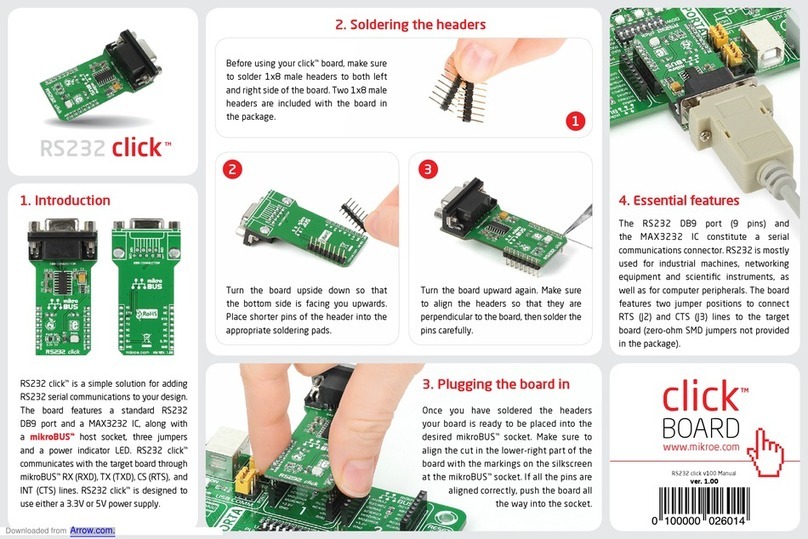
mikroElektronika
mikroElektronika RS232 click manual

PLX Technology
PLX Technology PCI 9054RDK-LITE Hardware reference manual

Lattice
Lattice ECP3 user guide
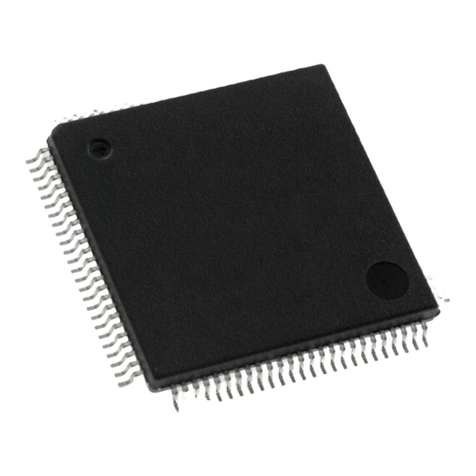
Renesas
Renesas RX200 Series user manual
Lattice Semiconductor
Lattice Semiconductor MachXO LCMXO2280C-4FT256C user guide
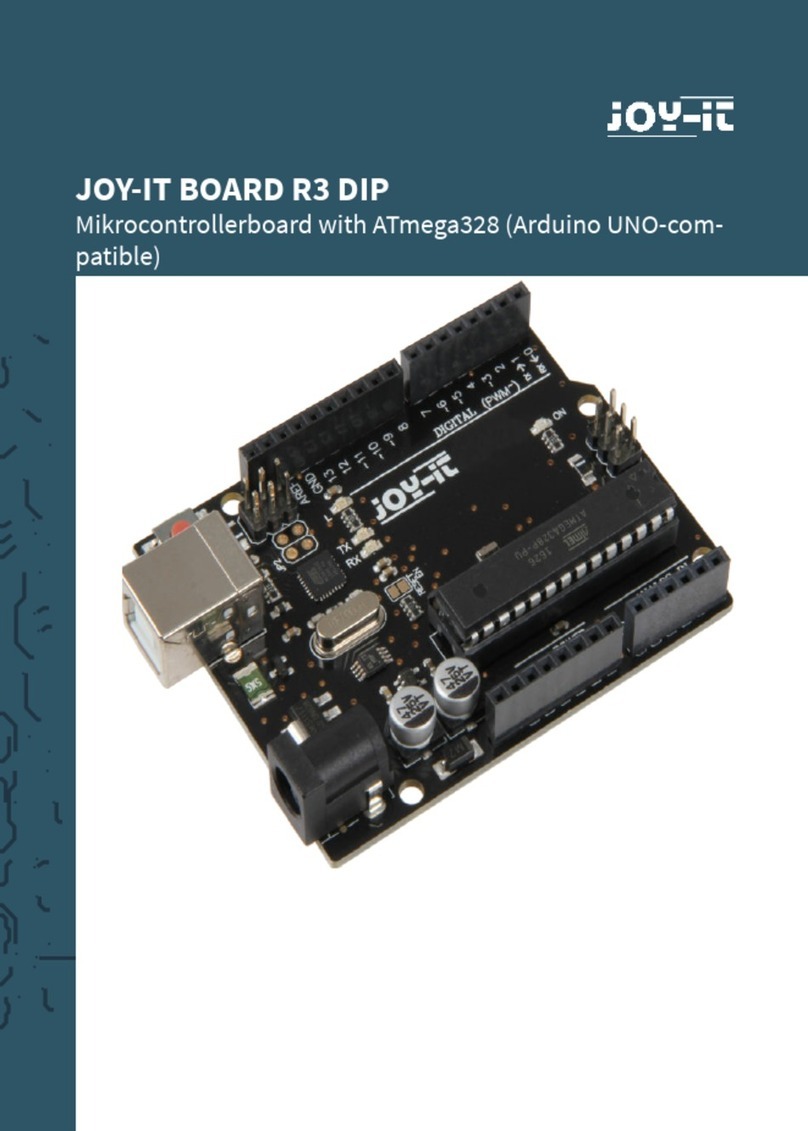
Joy-it
Joy-it BOARD R3 DIP manual
NXP Semiconductors
NXP Semiconductors LPC55S0x Hardware Design Guidelines
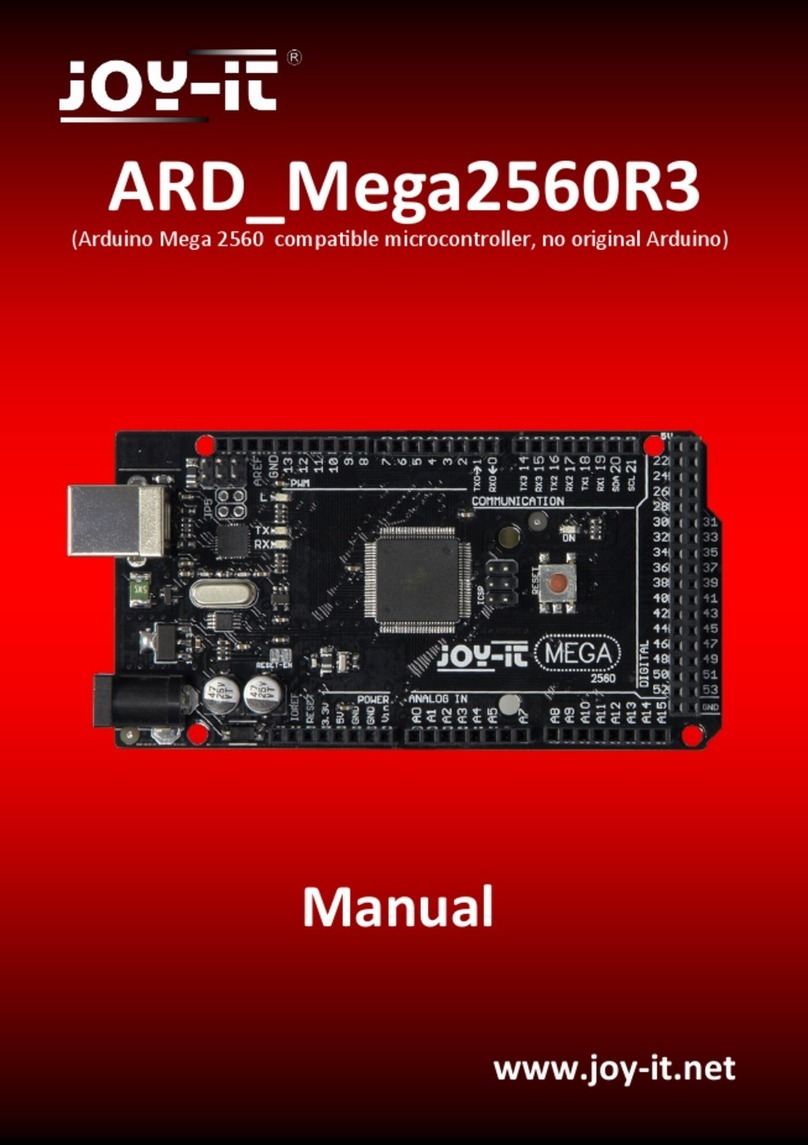
Joy-it
Joy-it ARD_Mega2560R3 manual
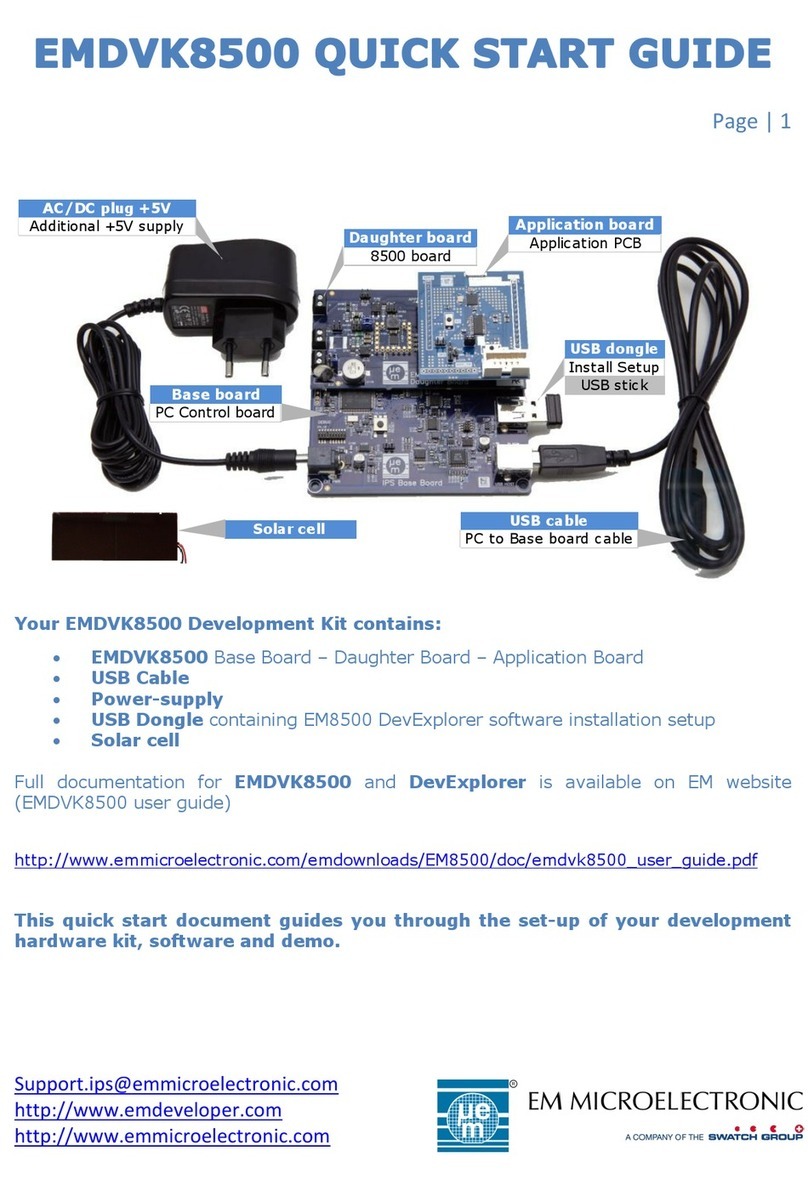
Swatch
Swatch EM Microelectronic EMDVK8500 quick start guide
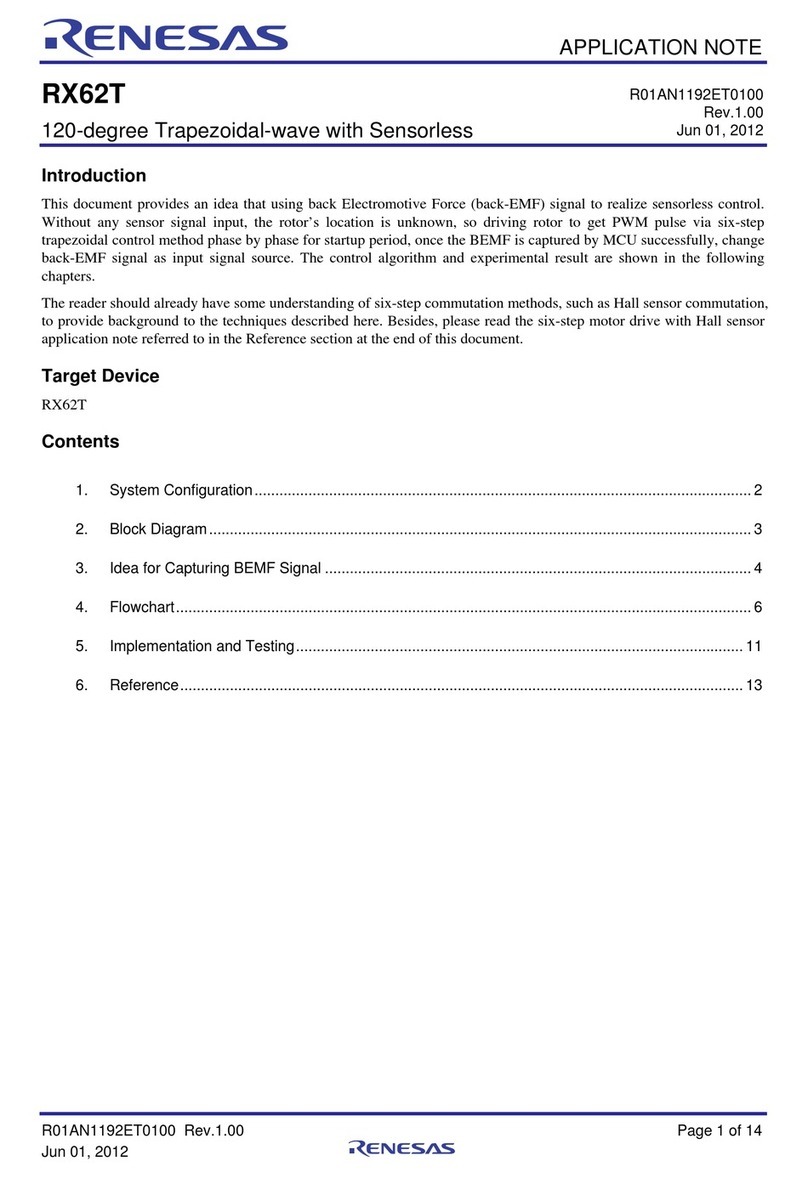
Renesas
Renesas RX62T Application note
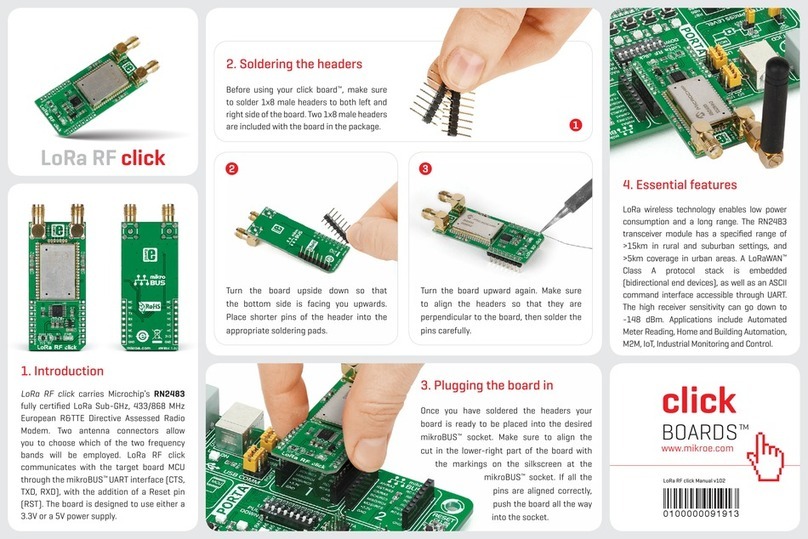
mikroElektronika
mikroElektronika MIKROE-1993 instruction manual
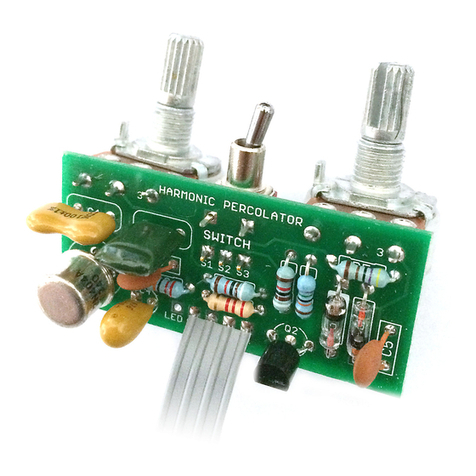
FuzzDog
FuzzDog Harmonic Percolator V3 manual
